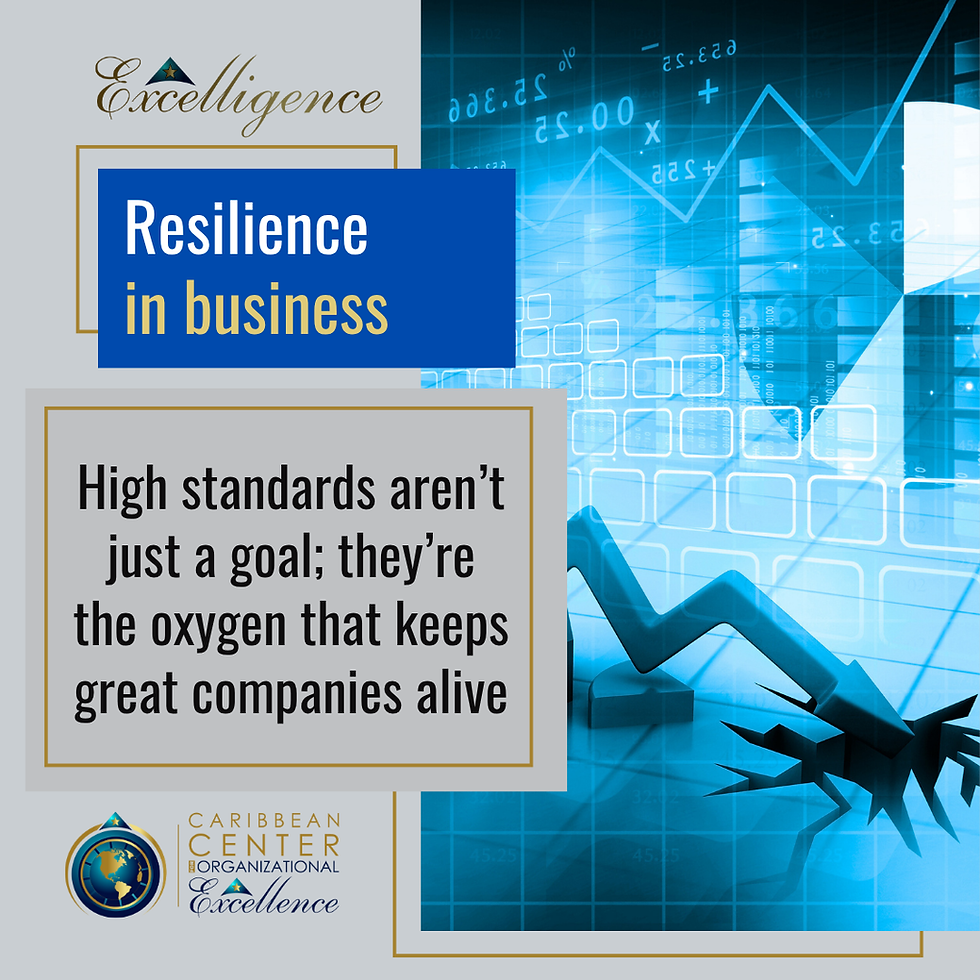From Great to Gone: How Good Companies Suffocate and Die
- Jerry DaC Blenman

- Aug 9
- 3 min read

Imagine starting a new job in an office where meetings regularly start ten minutes late. At first, you’re uncomfortable, as in your last role, punctuality was sacred. But after a few weeks, you stop hurrying to the conference room. Soon, you’re the one arriving a few minutes after the scheduled time.
This is how it begins... not with a grand failure or dramatic scandal, but with small deviations from best practice. The danger in such circumstances isn’t just a case of things not being perfect; it’s one of people actually adapting to the imperfection.
In the world of standards and quality, this is called acclimatizing to low standards, and it’s one of the most corrosive forces in any organization or professional environment. It creeps in quietly, often without anyone realizing, until the organization’s “normal” is a long way from what excellence once looked like.
Why This Matters More Than You Think
Standards, whether in manufacturing, customer service, project delivery, or daily office operations, aren’t about bureaucracy or nitpicking as some may think... not at all! They are about enshrining consistency, maintaining quality, ensuring safety, engendering trust, and enabling growth.
Declining organizational standards are a dangerous form of risk that naturally invokes possibilities for damaged reputation, low employee morale, increased waste, safety incidents, compliance breaches, loss of competitiveness, and yes, the list is well beyond those mentioned here.
The Standards Decay Slide
Low standards rarely arrive all at once. They creep in through a predictable pattern I call the Standards Decay Slide.

This isn’t just theory; I have seen organizations and, yes, high-performing teams slide through every one of these stages in short order without leadership noticing and, on occasion, not intervening.
10 Dangers of Normalizing Low Standards
Building on the inevitability of the foregoing Standards Decay Slide, here are ten ways acclimatizing to a low-standard and quality environment can actually harm individuals and organizations alike.
1. Erosion of Professional Discipline - Over time, people stop pursuing excellence because the baseline expectation is already low. This erodes habits of thoroughness, precision, and continuous improvement and guess what??? once those habits are gone, rebuilding them can be extremely difficult.
2. Lowered Benchmark Becomes the New “Normal” - If mediocrity is tolerated long enough, it stops feeling like mediocrity. Organizations begin to judge performance against an already poor yardstick and, in the process, reinforce the cycle of underperformance.
3. Loss of Critical Thinking and Problem-Solving Capacity - High-quality environments demand proactive problem-solving and risk anticipation. Low-quality environments breed reactive, “band-aid” fixes; this can very quietly weaken analytical and root-cause skills.
4. Reduced Competitiveness - Organizations operating at low standards simply can’t compete with those that have embedded best practices, continuous improvement, and innovation into their culture. They simply just cannot!
5. Safety, Compliance, and Legal Risks - Standards exist for safety, regulatory compliance, and ethical governance. Acclimatizing to low standards increases the risk of accidents, non-compliance, penalties, lawsuits, and reputational damage. Clearly, high standards matter and are important to the character of an organization.
6. Cultural Contamination - The “it’s good enough” mindset can spread very quickly across teams and functions. Unfortunately, once this culture sets in and is embedded, even high performers can become demotivated and disengaged.
7. Talent Drain - Skilled, ambitious people don’t stay in environments where quality is not valued. Over time, only those comfortable with mediocrity remain, deepening the decline.
8. Customer Confidence Collapse - Customers sense when quality is slipping, whether in product reliability, service consistency, or communication. This can have a direct impact on trust, which can be difficult to regain once eroded.
9. Innovation Stagnation - Low standards environments tend to resist change (“why bother improving?”). This quite naturally kills creativity and the drive for breakthrough ideas.
10. Institutional Decay - Ultimately, organizations risk a slow death: declining revenues, shrinking market share, and eventual obsolescence – WHY? - all because they accepted “low standards” as the baseline.
Conclusion
The harsh reality is that human beings are remarkably adaptable. We adjust to survive even in environments that harm our own standards. Peer pressure, leadership cues, and sheer fatigue all play a role. Eventually, even those who once cared deeply may think, “Why bother? No one else seems to even care.”
That’s why leadership tone is so important. That’s why personal commitments to high standards are vital. That’s why having systems in place to monitor for realignment is crucial. People and organizations don’t rise to the occasion; they rise to the expectations.
Reversing low standards takes conscious effort and visible leadership. The moment we settle for less, we begin a slow walk toward irrelevance. But the moment we recommit collectively to high standards, we breathe life back into organizations, as well as their culture, results, and future.
Excellence is never an accident. It’s the product of a thousand daily decisions to hold the line, even when it’s inconvenient.







Comments